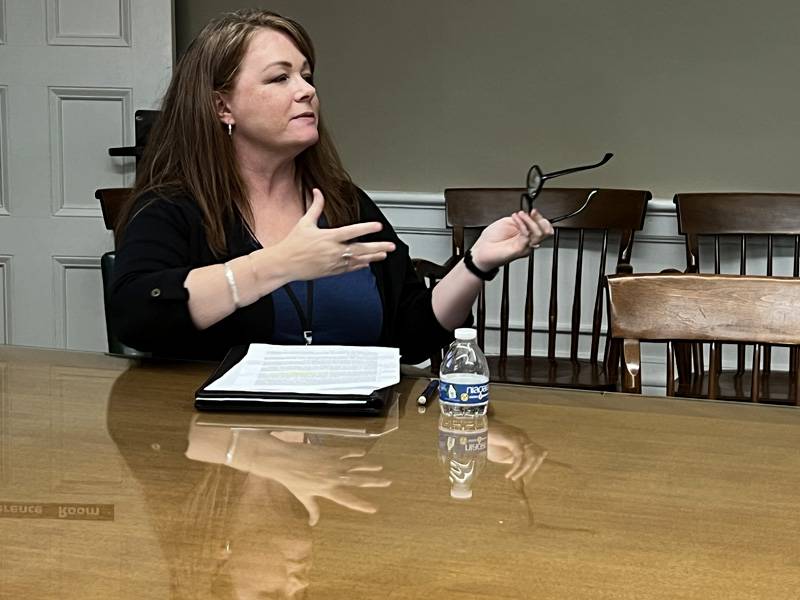Trends for Genesee County: homelessness on the rise

Photo by Howard Owens
Annual departmental reviews can sometimes be rather mundane, as they list various numbers, staffing activities and government programs.
However, trends also emerge from the statistics, such as a “very significant increase in homelessness” since the COVID-era eviction moratorium ended in 2022, Social Services Commissioner Carla Mindler says.
Mindler reviewed the reasons for Genesee County’s apparent rise in people losing their rentals or otherwise not having housing during this week’s Human Services meeting.
Landlords who could not evict their tenants during the pandemic because they accepted Emergency Rental Assistance Program funds have this year been able to evict them and are “actively doing so,” she said.
“We have had a huge increase in homelessness. The eviction moratorium ended in 2022. But not all of the landlords could immediately evict because if they took advantage of ERAP, the Emergency Rental Assistance Program, they had to sign something saying I will not evict this individual for 12 months due to nonpayment of rent. So now, some of those cases that sat for a while, the landlords are now taking them in and evicting them,” she said. “So we're having homeless individuals, and because of that, there is a shortage of the very low-income housing, and those are the individuals that were getting in. Some people are fleeing the other counties, you know, (due to) the crime rates in Rochester, sometimes in Buffalo, they're coming here and saying we just want to start new.”
New York State ERAP applications stopped being accepted after Jan. 20, 2023, at 9 p.m. Eastern Standard Time. Individuals will not be able to submit applications or complete applications that have been started but not submitted after this time.
According to an article by the Associated Press in June 2023, “Upstate New York evictions are rising after a moratorium lifted last year.”
“Forty of the state's 62 counties had higher eviction filings in 2022 than before the pandemic,” the article states, “including two where eviction filings more than doubled compared to 2019.”
So Genesee County isn’t alone, and officials are doing what they can, Mindler said.
“We, of course, encourage people to move here. However, as you know, homeless are where they’re found, so if they truly do not have a home to go back to in those counties, then they become ours. And people are also coming here sometimes for a temporary purpose and end up staying,” she said. “So if they are open in another county, they have to keep them open for a couple of months, but then they do want to stay here.”
There is an active bill in the state Senate called the "winter moratorium on evictions act of 2023,” which states that evictions are linked to all-cause mortality and lead to an array of negative mental and physical health outcomes, including higher rates of emergency room utilization, mental health hospitalizations, suicide, children's hospitalization, and depression and directly result in job loss and disruption to a child's education.
Evictions are a significant cause of homelessness, both directly and indirectly, it states, and the Department of Housing and Urban Development identified at least 91,271 homeless individuals throughout New York State as of January 2020, including 77,943 individuals in New York City and 13,328 individuals throughout the rest of the State.
The bill is in committee at this point and yet to be passed onto the Senate floor in an effort to pass a moratorium on evictions during winter months.
